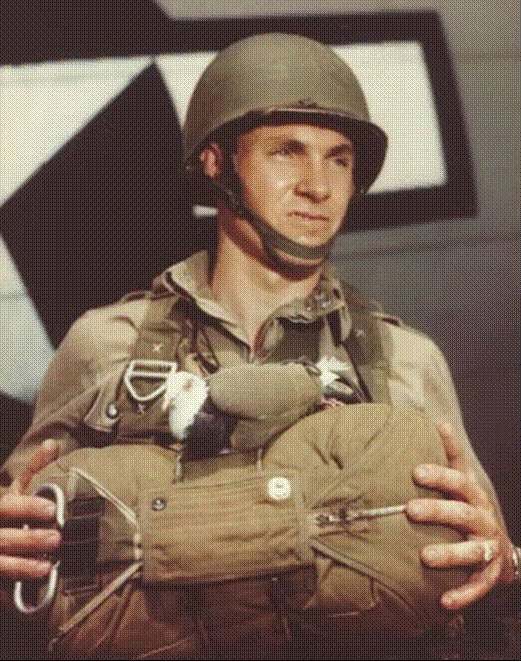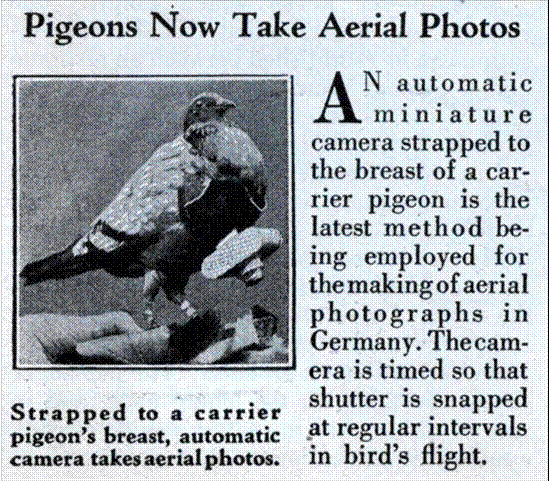|
|
 |
Club member LINDA JONES has sent us this article husband
Charlie wrote for his KBR newsletter Bird Brain column in Iraq. We
know you will find it interesting. Bet there's several folks in Woodlake who remember some of this WWII stuff!
|
 |
|
Since our mission is to support our troops in Iraq, I thought you might like to know
how birds have also supported combat troops. We all know KBR’s slogan is
“We Deliver,” but I’ll
wager it was a pigeon that first coined that phrase! As you walk around, you
see pigeons everywhere, so you probably don’t get too excited about them; but wait till you read what this ubiquitous
avian has done in wartime.
The most famous pigeon in World War I was Cher Ami, who worked for
the Army Signal Corps in France. His feats included delivering 12 important messages and saving the Lost Battalion
of the 77th Division in the Battle of Argonne. The pigeon was shot in the breast
in its last mission, but still managed to deliver its message. Cher Ami was awarded the Croix de Guerre for its bravery.
The most famous pigeon in World War II was GI Joe, who worked for the U.S.
Army Pigeon Service in Italy. This bird is credited
with making the most outstanding flight by a USA Army Pigeon in World War II - making the 20 mile flight from British 10th
Army HQ in the same number of minutes. It brought a message to the Allied Forces to tell them that the village had already been captured by the British
Forces, so there was no need to bomb the village as had been planned. GI Joe was awarded the Dickin Medal for Valor.

|
 |
|
|
|
 |
The Dickin Medal for Valor is an award exclusively given to animals that have performed heroic deeds. The Dickin Medal was instituted in 1943 in the United Kingdom by Maria Dickin to honor
the work of animals in war. Maria Dickin was the founder of the People's Dispensary for Sick Animals (PDSA), a British veterinary charity.
She established the award for any animal displaying conspicuous gallantry and devotion to duty while serving or associated
with the British Commonwealth armed forces or civil emergency services. It is a bronze medallion, bearing the words "For Gallantry"
and "We Also Serve" within a laurel wreath, carried on ribbon of striped green,
dark brown and pale blue. The award is commonly referred to as "The Animals' Victoria Cross". The medal was awarded 54 times between
1943 and 1949, to 32 pigeons, 18 dogs, 3 horses and a cat, to acknowledge actions of gallantry or devotion during the Second
World War. The most recent animal to be honored is Treo, a black Labrador, honored
for his "heroic actions as an arms and explosives search dog in Afghanistan." As of March 2010, the Dickin Medal has been awarded 63 times.
In World
War II, 32 different pigeons received the award - more than any other animal. The
first recipients of the award, in December 1943, were three pigeons, serving with the Royal Air Force, all of whom contributed
to the recovery of air crew from ditched aircraft during the Second World War.
William of Orange was a male pigeon
soldier of MI14 (British Secret Service). He was awarded the 21st Dickin Medal for delivering a message from the Arnhem Airborne
Operation. Communications in that battle were a problem for the Allied units; German troops had surrounded the airborne forces
and their few remaining radio sets malfunctioned. William of Orange was released
by British soldiers at 10:30 on September 19, 1944, and arrived at his nest box in England at 14:55. He flew over 400 km (250 mi) and the message he carried was one
of the few to make its way back to the United Kingdom. This message saved more than 2,000 soldiers combined at the time of the Battle of
Arnhem in September 1944. The bird’s official name in military records is, NPS.42.NS.15125. He received the medal in
May 1945.
|
 |
|
|
|
|
|
Some other notable Pigeon Dickin Medal winners:
Gustav
Pigeon -
NPS.42.31066
Date of Award: 1 September 1944
“For delivering the first message from the Normandy Beaches from
a ship off the beach-head while serving with the RAF on 6 June 1944.”
Kenley Lass
Pigeon - NURP.36.JH.190
Date of Award: March 1945
“For
being the first pigeon to be used successfully for secret communications from an agent in enemy-occupied France
while serving with the NPS in October 1940.”
Navy Blue
Pigeon - NPS.41.NS.2862
Date of Award: March 1945
“Although
injured, for delivering an important message from a Raiding Party on the West Coast of France, while serving with the RAF
in June, 1944.”
Flying Dutchman
Pigeon – NPS.42.NS.44802
Date of
Award: March 1945
“For successfully delivering messages from agents in Holland
on three occasions - he was reported missing on a fourth mission, while serving with the RAF in 1944.”
Dutch Coast
Pigeon -
NURP.41. A.2164
Date of Award: March 1945
“For delivering an SOS from a ditched aircrew close to the enemy coast
– flew 288 miles distance in 7½ hours, under unfavorable conditions, while serving with the RAF in April 1942.”
Scotch Lass Pigeon - NPS.42.21610
Date of Award:
June 1945
“Although injured, for bringing 38 microphotographs across the North Sea in good time while serving with
the RAF in Holland in September 1944.”
Billy
Pigeon - NU.41.HQ.4373
Date of Award: August 1945
“For
delivering a message from a force-landed bomber, while in a state of complete collapse and under exceptionally bad weather
conditions, while serving with the RAF in 1942.”
Princess
Pigeon - 42WD593
Date of Award: May
1946
“Sent on special mission to Crete, this pigeon returned to her loft (RAF
Alexandria)
having travelled about 500 miles mostly over sea, with most valuable information. This was one of the finest performances
in the war record of the Pigeon Service.”
Duke of
Normandy
Pigeon -
NURP.41.SBC.219
Date of Award: 8 January 1947
“For being the first bird to arrive with a message from Paratroops
of 21st Army Group behind enemy lines on D-Day, 6 June, 1944, while serving with APS.”
Pigeon DD.43.T.139 (Australian Army signal Corps)
Date of award: February 1947
“During a heavy tropical storm, this bird was released from
Army Boat 1402 that had foundered on Wadou Beach
in the Huon Gulf. Homing 40 miles to Madang, it brought a message which enabled a rescue
ship to be sent in time to salvage the craft and its valuable cargo of stores and ammunition.”
Pigeon - DD.43.Q.879 (Australian Army Signal Corps)Date
of award: February 1947
“During an attack by Japanese on a U.S. Marine patrol on Manus Island, pigeons were released to warn
headquarters of an impending enemy counter-attack. Two were shot down, but DD43, despite heavy fire directed at it reached
HQ with the result that enemy concentrations were bombed and the patrol extricated.”
 |
|
|
 |

